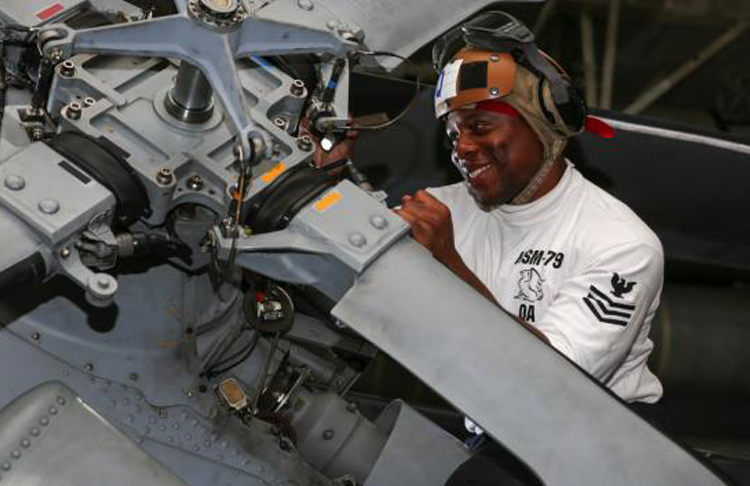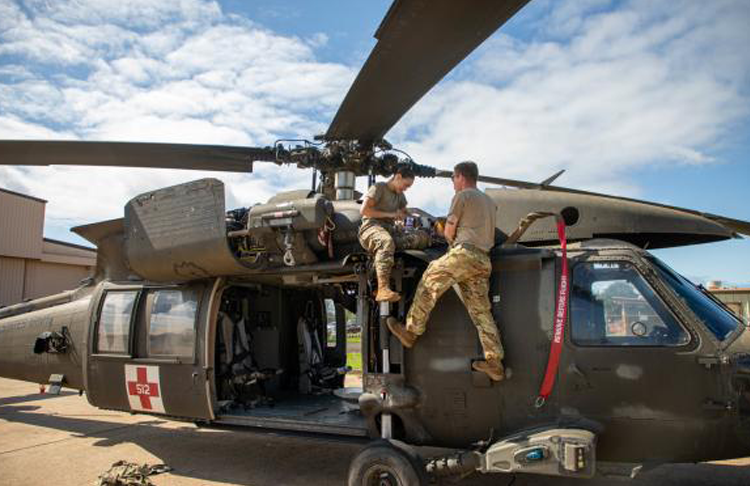Mission Ready: How the Joint Logistics MI Supports Warfighters
- By: The JAIC
 (Source: DVIDS)
(Source: DVIDS) Whether they travel by land, air, or sea, warfighters rely heavily on their vehicles and equipment to perform at the very highest level to achieve mission success. After all, failure could mean the difference between life or death on the battlefield.
For this reason, the Department of Defense is constantly looking for ways to improve military vehicle readiness and lower costs by minimizing downtime for unscheduled vehicle and equipment maintenance.
The DoD spends $78B annually on maintenance and an additional $150B on logistics. Up to 70% of platform cost is tied to the lifecycle sustainment of a piece of equipment such as a tank, ship, or aircraft. In addition, more than 25% of the entire active duty force are in maintenance, supply, and logistics roles. DoD leaders are looking to Artificial Intelligence to help to improve readiness and efficiency.
Joint Logistics is one of six Mission Initiatives run by the Joint Artificial Intelligence Center. Each one of these initiatives are focused on addressing high-priority and business reform challenges impacting DoD and military organizations.
The Joint Logistics mission initiative is led by Colonel Kenneth Kliethermes with the team based out of Pittsburgh.
 (Source: DVIDS)
(Source: DVIDS)The Joint Logistics’ mission is to increase the adoption of AI within DoD vehicle maintenance and supply communities to improve readiness through predictive maintenance and AI-driven diagnostics, training, process improvements, demand forecasting, and supply chain optimization. Its three goals are to:
- Create end-to-end products to remove barriers/solve challenges to enable aviation predictive maintenance across the DoD.
- Find and bring AI products created by a service or combatant command to the Joint Common. Foundation for sharing and to the JAIC product development for possible scaling.
- Foster collaboration across the DoD (share, reuse, decrease duplication).
When it was established in FY 19, Joint Logistics was initially known as Predictive Maintenance or PMx, as it focused on predictive maintenance as its initial use case. Since then, the program has expanded its portfolio to include supply and logistical operations. That expansion, along with the JAIC’s restructuring, led to the MI’s name change.
Army Chief Warrant Officer Kyle Gaylor is the requirements manager for the JAIC Joint Logistics program and a UH60 maintenance pilot. Gaylor provides the team with first-hand insight into and experience with the Sikorsky H60 “Black Hawk” helicopter and aviation maintenance processes. The UH60 belongs to a family of combat helicopters that is used across the different military services. As such, it was chosen as the first focus platform for AI solutions.
Gaylor also does double-duty as the project manager for the Carnegie Mellon University Predictive Maintenance program that helped develop the Engine Health Model. The Engine Health model predicts the probability of an engine hot start, which necessitates an engine maintenance action.
The 160th Special Operations Aviation Regiment (a key partner of the Joint Logistics mission initiative) is using the model’s output to plan maintenance and to avoid sending unhealthy engines on critical or remote missions.
“With the H-60 helicopter as a pilot program, in partnership with the Army, Navy, Air Force, and the U.S. Special Operations Command, we have been identifying and addressing ways to improve the efficiency and effectiveness of maintenance opera¬¬tions for not only H-60 operations but to also accelerate the adoption of AI-enabled maintenance and logistics applications for other platforms across the DoD,” Gaylor said.
Some of the team’s most recent milestones include transitioning the Engine Health Model from CMU to the 160th SOAR and identifying the U.S. Army Aviation and Missile Command as a transition partner for AutoFire - a joint effort between the Algorithmic Warfare Provisional Program Activity Office and the Air Force Research Laboratory. Autofire is an AI tool that predicts root cause failure analysis of T700 engines to increase efficiency of an Engineering Review Board compromised of subject matter experts that meets quarterly.
Two Requests for Information from industry have been issued within the past several weeks for Records Evaluation and Scoring Tools and a Visualization and Holistic Aircraft Component Health Predictor.
“The meta-products developed and the valuable lessons learned during the collaboration between CMU and 160th SOAR engine health research, as well as the RFI responses from industry will provide the foundation as Joint Logistics moves forward on future projects, outreach, and collaboration across the DoD,” Gaylor said.
By working with the JAIC, the Joint Logistics mission initiative can share technical solutions and lessons learned to help warfighters predict and mitigate key mechanical issues, enhance the effectiveness of platform maintenance, and scale AI solutions across multiple DoD services and commands.
“AI isn't going to find and solve all the problems out there; however, it is an amazing tool to assist the maintainer, operator, engineers, and program offices in making more informed and timely decisions,” Gaylor said. “If we can inform and advise the maintenance managers and operations officers of the pending fault probabilities, then they can execute informed decisions on when to perform maintenance; what tools, people, and parts to have ready; or which aircraft to select for what mission.”